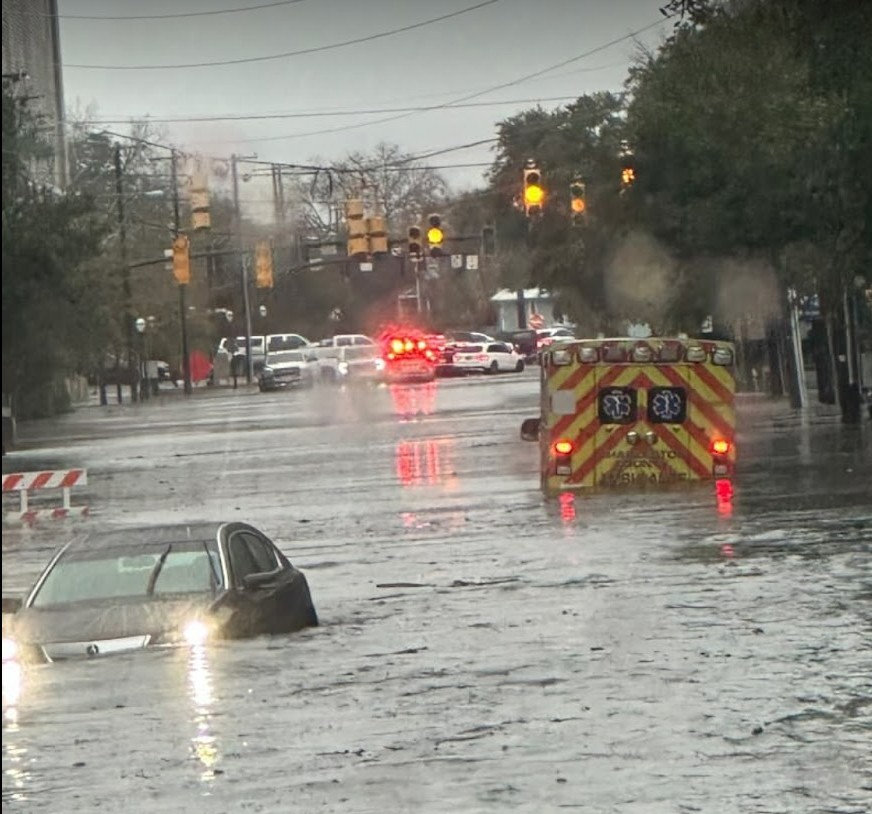The Global Flood Crisis: A Looming Threat to Over a Billion People
Picture this: more than one-fifth of our world is standing on the brink of substantial flooding, a dire consequence of the escalating climate crisis. With nearly two billion people at risk and coastal flooding projections skyrocketing by 2100, the situation is undeniably critical.
The AI Resilience: A Beacon Amidst Growing Chaos
Amidst the impending doom, there’s a glimmer of hope—artificial intelligence (AI). Scientists and researchers worldwide are increasingly turning to AI to combat the growing flood menace. From Iowa to Norway, flood monitoring firms are harnessing the power of AI to create digital prediction models. These models aim not only to provide early evacuation warnings but also to generate more accurate mapping data.
Cities on the Verge: A Terrifying Outlook
A grim forecast looms over cities globally, with some expected to witness over six feet of flooding by the turn of the century. Shockingly, at least eight major American cities, including New Orleans, Miami, and New York City, face the risk of near-total disappearance by 2100.
From Conventional to Cutting-Edge: The Evolution of Flood Prediction Models
Traditionally, physics-based flood models relying on standard computing power dominated the field. However, these models proved prone to underestimating the actual risk, leading to tragic incidents like the one in Waverly, Tennessee, in August 2021, where 20 lives were lost due to underestimated rainfall.
The Power of AI: Beyond Weather Forecasts
In contrast, AI models delve deeper, studying not only weather forecasts but also considering the surrounding land, rivers, drainage information, and regional layout. One notable player in this field is 7Analytics, a Norway-based sustainability data platform that offers real-time flooding predictions. Their AI model, foreseeing catastrophic weather events up to seven days in advance, has become a crucial tool for local businesses and authorities.
Global Players: AI’s Reach Across Continents
London-based Neara employs AI to create digital flood simulations, aiding electricity networks in preparing for and responding to water damage. The University of Iowa boasts its own AI model, Flood AI, while even tech giant Google has joined the fray with its Flood Hub platform. This platform, offering river flood warnings in over 80 countries, uses satellite images to predict river flooding post-rainfall.
Google’s Flood Hub: An AI Pioneer in Flood Warnings
Google’s Flood Hub, launched earlier this year in the UK and the US, sent 115 million flood alert messages to 23 million people in 2021 alone. By using satellite images, the system predicts river flooding, providing warnings two to seven days before potential weather disasters.
The Imperfections: AI’s Achilles’ Heel
However, it’s essential to recognize that AI models aren’t flawless. According to Amy McGovern, a computer scientist at the University of Oklahoma School of Meteorology, their effectiveness relies heavily on the data they collect. Regions without a history of severe flooding remain at risk, highlighting the ongoing challenges as AI races to gather enough information to predict rare heavy rains accurately.
In conclusion, as our world grapples with the escalating threat of floods, artificial intelligence emerges as a powerful ally. While not without flaws, the strides made in AI-driven flood prediction offer a ray of hope in safeguarding vulnerable communities from the devastating impacts of climate change.










Leave a Reply